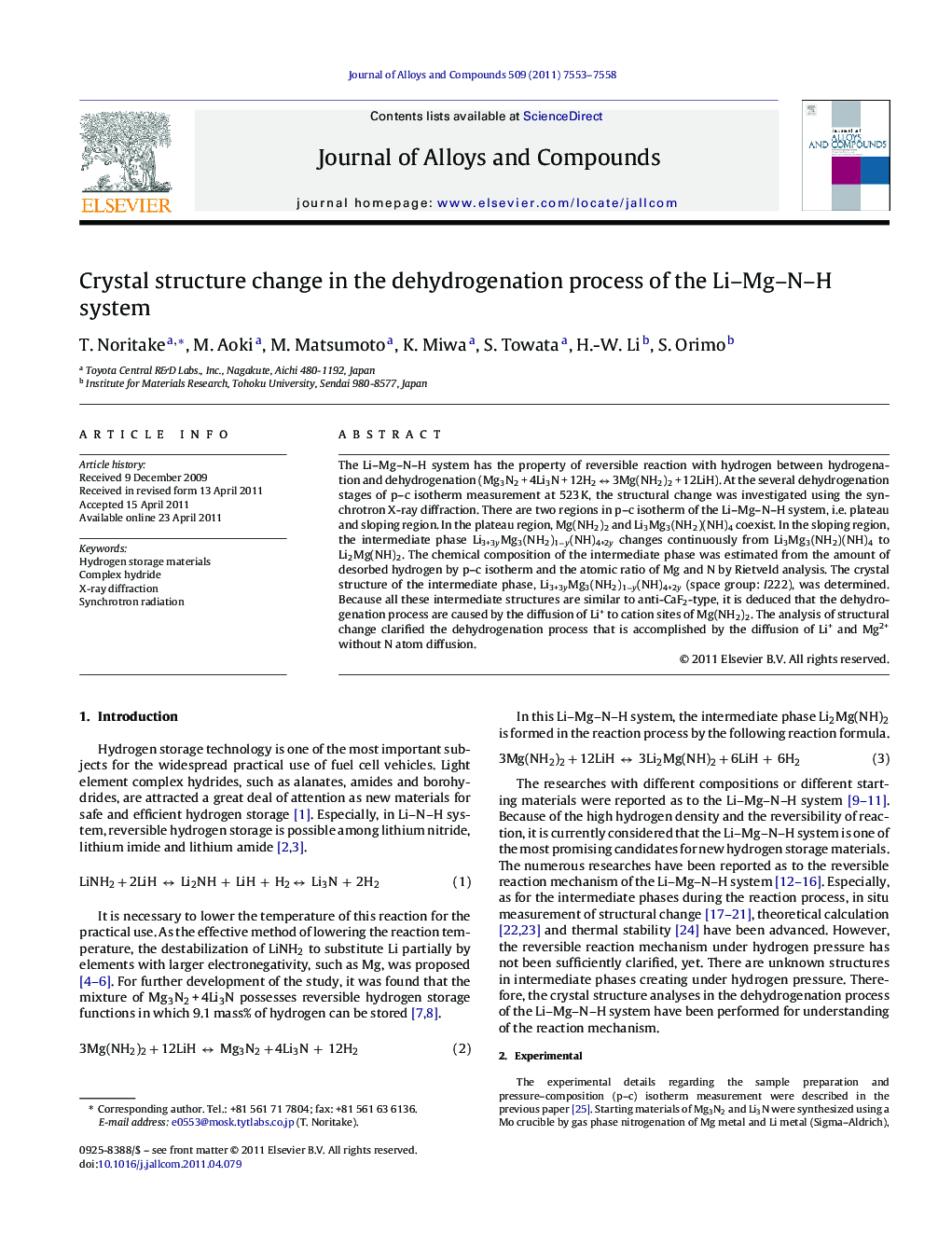| Article ID | Journal | Published Year | Pages | File Type |
|---|---|---|---|---|
| 1617268 | Journal of Alloys and Compounds | 2011 | 6 Pages |
The Li–Mg–N–H system has the property of reversible reaction with hydrogen between hydrogenation and dehydrogenation (Mg3N2 + 4Li3N + 12H2 ↔ 3Mg(NH2)2 + 12LiH). At the several dehydrogenation stages of p–c isotherm measurement at 523 K, the structural change was investigated using the synchrotron X-ray diffraction. There are two regions in p–c isotherm of the Li–Mg–N–H system, i.e. plateau and sloping region. In the plateau region, Mg(NH2)2 and Li3Mg3(NH2)(NH)4 coexist. In the sloping region, the intermediate phase Li3+3yMg3(NH2)1−y(NH)4+2y changes continuously from Li3Mg3(NH2)(NH)4 to Li2Mg(NH)2. The chemical composition of the intermediate phase was estimated from the amount of desorbed hydrogen by p–c isotherm and the atomic ratio of Mg and N by Rietveld analysis. The crystal structure of the intermediate phase, Li3+3yMg3(NH2)1−y(NH)4+2y (space group: I222), was determined. Because all these intermediate structures are similar to anti-CaF2-type, it is deduced that the dehydrogenation process are caused by the diffusion of Li+ to cation sites of Mg(NH2)2. The analysis of structural change clarified the dehydrogenation process that is accomplished by the diffusion of Li+ and Mg2+ without N atom diffusion.
► Structural change in several dehydrogenation stages of p–c isotherm at 523 K. ► Mg(NH2)2 and Li3Mg3(NH2)(NH)4 coexist in the plateau region. ► Continuous change from Li3Mg3(NH2)(NH)4 to Li2Mg(NH)2 in the sloping region. ► The crystal structure Li3+3yMg3(NH2)1−y(NH)4+2y was determined. ► The dehydrogenation by the diffusion of Li+ and Mg2+ without N atom diffusion.
